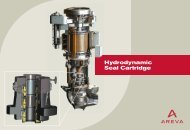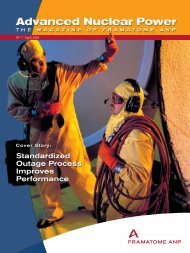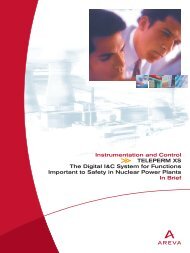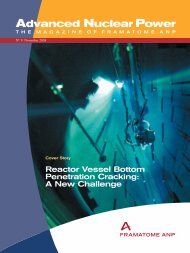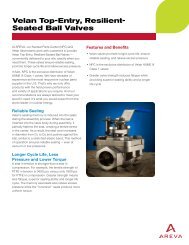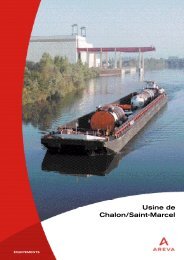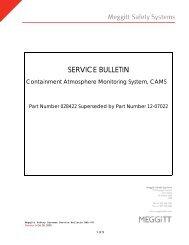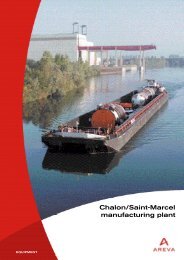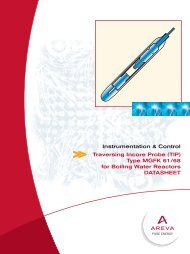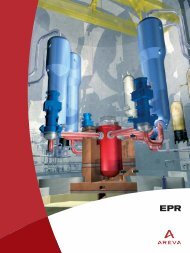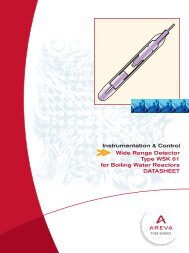Areva EPR
Areva EPR
Areva EPR
Create successful ePaper yourself
Turn your PDF publications into a flip-book with our unique Google optimized e-Paper software.
NUCLEAR SAFETY<br />
The fission of atomic nuclei, performed in reactors to generate heat, brings into play large<br />
quantities of radiation-emitting radioactive substances from which people and the environment<br />
must be protected.<br />
This explains the need for nuclear safety, which consists of the set of technical<br />
and organizational provisions taken at each stage in the design, construction and operation<br />
of a nuclear plant to ensure normal service, prevent the risks of an accident and limit its<br />
consequences in the unlikely event of its occurrence.<br />
Nuclear reactor safety requires that three functions should be<br />
fulfilled at all times:<br />
• control of the chain reaction, and therefore of the power generated,<br />
• cooling of the fuel, including after the chain reaction has stopped,<br />
to remove residual heat,<br />
• containment of radioactive products.<br />
It relies upon two main principles:<br />
• the three protective barriers,<br />
• defense in depth.<br />
The three protective barriers<br />
THREE PROTECTIVE BARRIERS<br />
The concept of the “three protective barriers” involves placing,<br />
between the radioactive products and the environment, a series<br />
of strong, leak-tight physical barriers to contain radioactivity in all<br />
circumstances:<br />
• first barrier: the fuel, inside which most of the radioactive products<br />
are already trapped, is enclosed within a metal cladding,<br />
• second barrier: the reactor coolant system is housed within a metal<br />
enclosure which includes the reactor vessel containing the core<br />
constituted by the fuel within its cladding,<br />
• third barrier: the reactor coolant system is also enclosed within a<br />
high-thickness concrete construction (for the <strong>EPR</strong>, this construction<br />
is a double shell resting upon a thick basemat, whose inner wall is<br />
covered with a leak-tight metal liner).<br />
† The resistance and leaktightness of just one of these barriers<br />
is sufficient to contain the radioactive products.<br />
Steam<br />
generator<br />
Pressurizer<br />
Reactor<br />
coolant<br />
pump<br />
Control<br />
rod drive<br />
mechanisms<br />
3<br />
2<br />
1<br />
Fuel<br />
assembly<br />
Reactor<br />
pressure<br />
vessel<br />
1 Fuel cladding<br />
2 Reactor coolant boundary<br />
3 Reactor containment<br />
I 45



